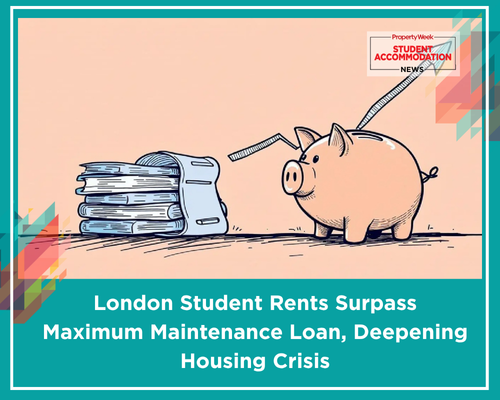
London Student Rents Surpass Maximum Maintenance Loan, Deepening Housing Crisis
London: Rising rents in London have now overtaken the maximum maintenance loan for students, with average costs reaching £13,595 for 2024/25. This shortfall worsens affordability, pushing many students into financial hardship and threatening access to higher education across the UK.
Accommodation remains one of the most pressing concerns for university students, with a recent survey revealing that half of students are anxious about the housing shortage that has come to characterise the higher education landscape in the UK. This sentiment is echoed in a report by Save the Student, which highlights a growing crisis exacerbated by rising rents that consistently outpace increases in maintenance loans. In December 2024, a joint report from Unipol and the Higher Education Policy Institute (HEPI) unveiled a startling development: the maximum maintenance loan now falls short of the average cost of student accommodation, leaving many young people struggling to afford basic living expenses.
The current landscape of student accommodation is shaped by a myriad of factors, including shifts in rental prices driven by local market conditions, changes in students' living behaviours, and broader economic trends. Data compiled by the Higher Education Statistics Agency (HESA) illustrates how accommodation types have evolved over the past decade. For second-year students and beyond, private rentals comprised 35.6% of housing arrangements for the academic year 2023/24, a slight decline from 43.7% in 2014/15. Conversely, the proportion of students living in owned properties has risen to 19.9%, reflecting a significant shift in student accommodation choices.
First-year students exhibit different housing trends, with university-provided halls making up 30.5% of their accommodation, a decline from 41.8% a decade earlier. As financial pressures mount, there has been a notable increase in students opting for owned residences; this group rose to 19.5% in 2023/24, up from 11.7% in 2014/15. Regional disparities further complicate the accommodation landscape, as different parts of the UK yield varying proportions of students in diverse living situations. For instance, while the South West has the highest concentration of students in private rentals—at 54.7%—the East of England has seen a notable increase in students living in accommodation owned by providers, reflective of local market dynamics.
The housing crisis is particularly acute in urban centres like London, where rental prices soar well above sums allocated by maintenance loans. The average rent for London students for the 2024-25 academic year is projected to reach £13,595, eclipsing the maximum loan of £13,348. This 'cost of learning crisis' risks pushing poor students out of higher education altogether, as the rising costs of living converge with stagnant financial aid. Advocacy groups such as the Higher Education Policy Institute and Universities UK are calling for urgent reform of maintenance support, aiming to enhance access for economically disadvantaged students.
In popular university towns like Bristol, the intense competition for housing has resulted in some students being relocated to nearby areas, only compounding the problem. A report notes that while demand for student housing remains high post-COVID, the availability of beds has diminished, driving rental prices up by 7% and significantly raising costs for those navigating the education system. The financial pressure also extends to accommodation developers, who have seen a surge in opportunities amid rising rental costs but must also contend with increased construction expenses, which have skyrocketed to over £100,000 per room.
Problems do not end with rent; energy costs have also taken a toll on students’ finances, averaging £85 per month—up £276 compared to the previous year. Many students have reported that their health is adversely impacted by the financial strain, with 72% claiming that the high cost of rent affects their well-being. Alarmingly, the situation has reached a juncture where 63% of students find it hard to keep up with rent, a figure that has only risen since the last survey.
The escalating costs of accommodation represent a significant barrier to access in higher education, particularly for disadvantaged students. The government must act to alleviate these pressures, fostering a more inclusive educational environment. By critically addressing the crisis in student housing, stakeholders can help ensure that higher education remains an attainable goal for all, rather than a privilege only for those who can afford it.

